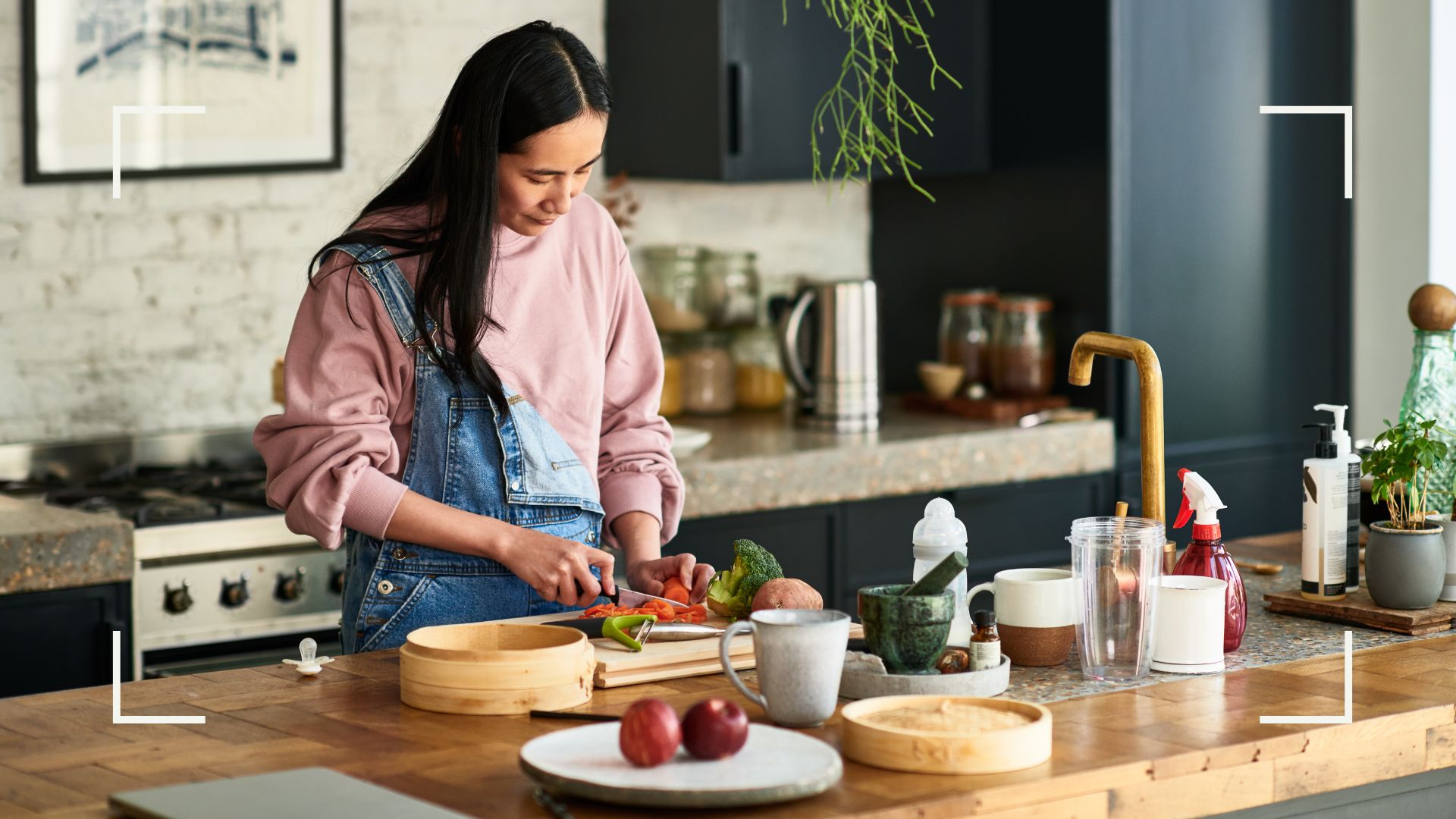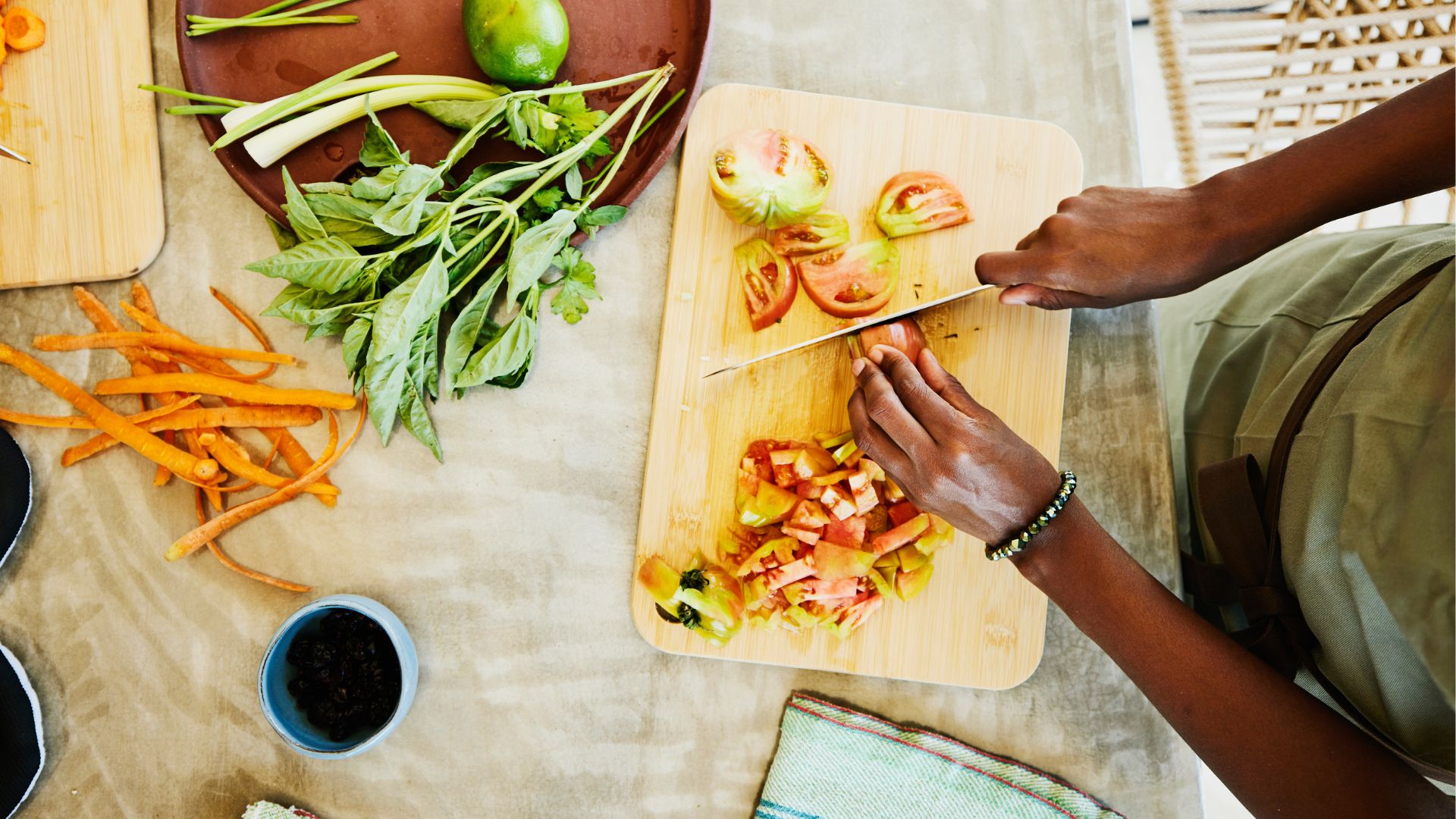Professional chef shares warning about wooden chopping boards
Wooden chopping boards can be ground zero for bacteria. Here's one chef's advice to help you change that...


The importance of cleaning your chopping board regularly is engrained in most of us, but you might be cleaning yours all wrong.
Wooden chopping boards are an obvious kitchen essential that most people use regularly, so how could we not know how to clean them properly? Well, it turns out there’s a lot more to the process than a simple wipe-down or soak. In fact, if you truly want to achieve a bacteria-free clean, we have a few handy tips you may want to add to your list of kitchen cleaning hacks.
Head Chef at Campbells Prime Meat, Stevie Cheape, stresses the importance of a clean and appropriately chosen chopping board. He says, "A proper selection of chopping boards is essential for maintaining food safety and preventing cross-contamination. Wooden and plastic boards offer different advantages and both can be effective, but care must be taken to ensure food safety."
Wooden chopping boards are particularly popular, not only because of their aesthetic appearance but also for their natural anti-microbial properties. However, due to the natural texture of the wood, stains and small particles of food can easily get stuck into their grains. "Wooden boards, though naturally antimicrobial, can be challenging to sanitize effectively, leading to potential bacteria growth," says Stevie.

"Wooden chopping boards require thorough washing to remove debris from their grooves, followed by air drying and the occasional food-grade mineral oil treatment."
So, if you're guilty of just giving your wooden chopping boards a quick scrub with a scourer, it might be time to swap it for a plastic one.
Plastic chopping boards, on the other hand, are significantly easier to clean and are a safer alternative as long as you’re okay with sacrificing style. Stevie actually prefers them, especially when preparing meat, he says, "Plastic boards are easier to clean and maintain. While wooden boards are safe when cleaned properly, opting for plastic boards for meat is often a much safer bet to significantly minimize the risk of bacteria growth."
Sign up to our free daily email for the latest royal and entertainment news, interesting opinion, expert advice on styling and beauty trends, and no-nonsense guides to the health and wellness questions you want answered.
If you are set on keeping your wooden board, however, Stevie shared the following cleaning tips:
Top tips to keep your wooden chopping board clean
Much like knowing how to clean wooden spoons, your wooden chopping board needs a little more attention due to its porous texture. With a little elbow grease and these great cleaning hacks, you can easily keep your board in business for years to come.
Clean after every use
This may sound obvious but cleaning your chopping board after every use is crucial if you want to keep the germs at bay. Start by removing all food debris, then wash the board with hot soapy water using a brush to really scrub all the affected surfaces.
When you're cleaning any wood products it's important to let it dry thoroughly (this principle applies, whether you're cleaning wooden garden furniture or cutlery). Otherwise, mildew can grow, which permanently affects the wood. To do this, simply stand your chopping board on its side so it can air dry evenly. This cleaning method is ideal for daily use. Avoid using the dishwasher as it may warp the wood or cause it to split.
Disinfect your board regularly
Should you want to further disinfect your board, it’s best to stick to natural anti-bacterial solutions. Luckily one of the best natural sanitizers, used in most expert cleaning hacks, is the wonderfully affordable white vinegar.
Simply mix equal parts of the vinegar with water, pour it into a spray bottle, and cover the board with the solution. Once you’ve let it sit for a few minutes, rinse the board with hot water until all the vinegar is removed. Thoroughly rinsing the board will also ensure that no vinegar residue will make its way into your next meal. Is there anything you can't clean with vinegar?
Use salt and lemon for stubborn stains and smells
Sadly, our wooden chopping boards often fall victim to stubborn stains and smells. Whether it’s beetroot, garlic, or tomatoes, particularly messy (or smelly) food items can leave a lingering presence on the board, even after extensive scrubbing.
To address these stains and smells, cover your board with a generous amount of kosher salt, then using half a lemon, begin scrubbing the salt into the wood. The acid from the lemon mixes with the abrasive salt and breaks downs any stains or smells that have been embedded into the wood grain. Let it sit for 20 minutes then rinse off, leaving to dry thoroughly.
Sand and oil your board
If your board has seen better days you might need to put some extra TLC into it. The team at Campbell’s suggests lightly sanding down your wooden chopping board each month to remove any knife marks. This will also remove stains or any rough areas that may have built up.
"Treat your chopping board with oil every few months or whenever you salt and sand. Wood is porous, and regular oiling helps maintain its condition and prevents the growth of bacteria. Apply food-grade mineral oil or a specialized cutting board oil to the wooden chopping board once a month or as needed," advises Stevie. The oil creates a barrier between the food and the wood whilst also keeping your board looking its best. We recommend using this specialist chopping board mineral oil from Furniture Clinic.
"Spread a thin layer of oil all over the board, including the sides, and let it penetrate the wood for several hours or overnight. Wipe off any excess oil with a clean cloth before using the board again," adds Stevie.

Emily joined woman&home as a staff writer after finishing her MA in Magazine Journalism from City University in 2023. After writing various health and news content, she now specialises in lifestyle, covering unique cleaning hacks, gardening how-tos, and everything to help your houseplants thrive.